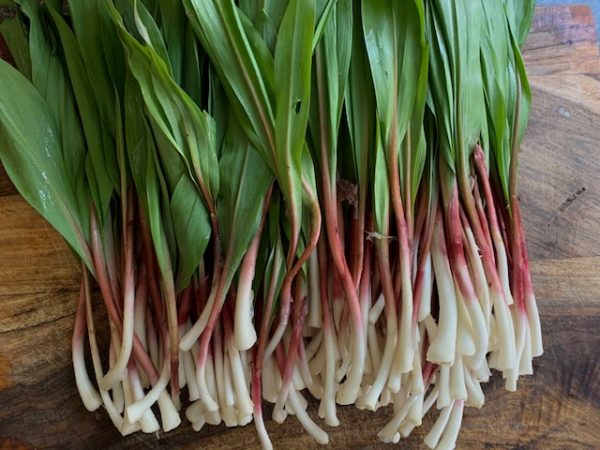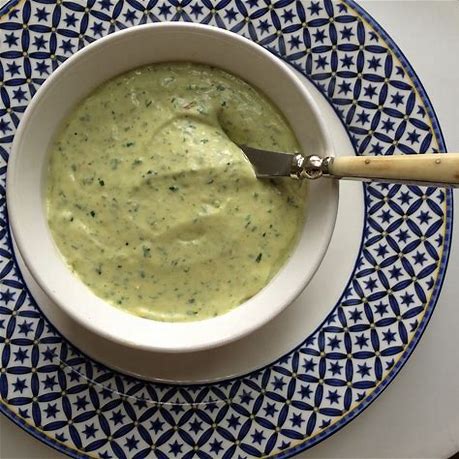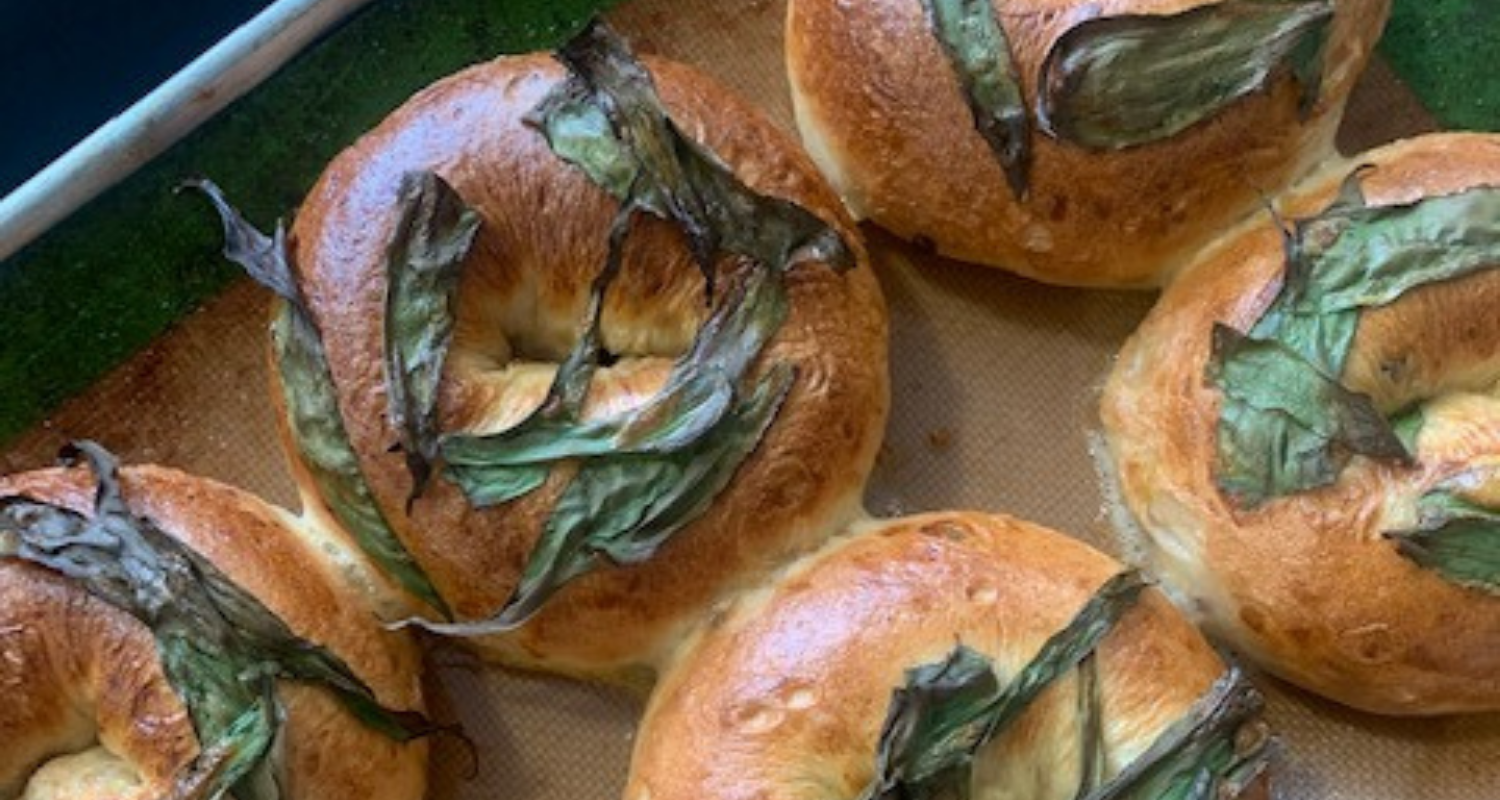Across Appalachia, ramps (also known as wild onions) are popping up to signal that spring has officially arrived – but how do you incorporate them into your home kitchen?
When it comes to ramps, I see endless possibilities. I typically start by thinking of the ways I use green onion or green garlic then simply substitute ramps in those recipes. Ramps are great for jazzing up condiments that can be used throughout the week in a variety of meals – ramp pesto and aioli are two staples in my kitchen. Last year, I began incorporating minced ramps into my bread doughs with delicious results, especially bagel dough. I used the leaves on top of the bagels as a garnish towards the end of baking.
READ MORE: Spring is Ramp Season in Wheeling

Pickling is another great way to save ramps and use them throughout the year. I use the pickled ramps with cream cheese on bagels, in homemade tartar sauce, on burgers and hotdogs and in chutneys. The leaves can also be dried in a dehydrator and crushed into a powder that can be added to sea salt to make a delicious ramp salt that can be used year-round.
If you’re wanting to incorporate ramps into your spring dishes, give some of these simple recipes a try:
Pickled Ramps
How to use it: Pickled ramps can add a kick to any dish. Mix them into a vinaigrette or a marinade. Chop them and put them on your favorite sandwich. Mince them and top your deviled eggs with them. Anywhere you like a pickle, a pickled ramp can go!
Ingredients:
- 1 lb. ramps, cleaned and leaves removed
- ½ cup mustard seeds
- ½ cup coriander seeds
- 2 heads of garlic
- 8-10 bay leaves
- 2 cups seasoned rice vinegar
- 1 cup apple cider vinegar
- 3.5 cups water
- ¼ cup kosher salt
- ¼ cup sugar
Additional supplies: ½ pint or pint canning jars
Directions:
- Pack the ramps into a clean jar, leaving about ½ – 1 inch from the top. Add one bay leaf, ½ tsp coriander seeds, ½ tsp mustard seed and one clove of garlic to each jar.
- In a stockpot over medium-high heat, add the vinegars, water, sugar and salt. Bring to a low simmer until the salt and sugar dissolve.
- Pour the hot vinegar and water solution over the ramps almost to the top of the jar and screw the lid on.
- If you’re going to keep these in the refrigerator, then you’re done! Just let them cool on the counter and before storing them in the refrigerator.
- If you would like to make these “shelf-stable” you’ll need to use a canning pot. In a canning pot of boiling water, gently lift each jar into the pot and make sure it’s covered by a few inches of boiling water. Set the timer for 15 minutes. Remove jars from the water bath and let sit on the counter untouched for 12 hours. Store in a cool, dark pantry. Wait at least 2 weeks to try the ramps.
Ramp Aioli

How to use it: Don’t let the fancy name fool you – aioli is a delicious, creamy condiment that could be considered mayonnaise’s elegant cousin. This ramp aioli is great on burgers and sandwiches and is a wonderful dip for raw vegetables. Ramp aioli can also be whisked into vinegar and olive oil to create a creamy vinaigrette. When making this aioli, be sure to use the freshest eggs you can find – a local farm is your best bet.
Ingredients:
- 1 whole egg
- 1 egg yolk
- Juice of ½ lemon
- ¼ cup minced ramps
- ¼ tsp salt
- ¼ tsp pepper
- 1 cup plus 2 tablespoons olive oil
Directions:
- In a medium-sized mixing bowl add the egg, egg yolk, lemon juice, salt and pepper. Whisk together.
- Very slowly begin whisking in the olive oil. Keep whisking briskly until it begins to emulsify and thicken with the egg. Keep whisking until you’ve added the last drop of olive oil. Refrigerate and use within a few days while fresh.
Creamy Ramp Aioli Dressing
How to use it: Add some seasonal flavor to your favorite garden salad. This dressing is excellent on raw vegetables or in a creamy potato salad.
Ingredients:
- 1 cup ramp aioli
- Juice of 1 lemon
- 2 tsp dijon mustard
- 4 tablespoons apple cider vinegar
- 3-4 tablespoons maple syrup
- 2-4 tablespoons olive oil
- Salt to taste
Directions:
In a mixing bowl, whisk together the aioli, lemon, mustard, vinegar and maple syrup. Then slowly begin whisking in the olive oil. If the mixture is too thick you can add whisk in a little water until it reaches your desired consistency. Season with salt to taste.
Ramp Pesto

How to use it: This pesto is wonderful on steak, broiled or grilled fish or shrimp, pasta and toast. You could also toss some ramp pesto with cold beans for a delightful bean salad. Ramp pesto can be added to cold cooked potatoes for a fun spin on potato salad.
What’s great about this simple recipe is that it freezes really well for year-round use. You can use an ice cube tray to fill with pesto and freeze. Pop the frozen cubes out and put them in a ziplock bag. You can use these cubes for soups and stews in the fall/winter, or just pop one out and defrost it to use on pasta.
Ingredients:
- 1 bunch of ramps (about ¼ pound), cleaned
- Juice of 1 lemon
- ¼ cup pine nuts
- ½ cup olive oil
- 1 tsp sea salt
- ¼ cup grated parmesan
Directions:
- In a food processor, add lemon juice and the ramps (leaves and whites). Pulse a few times to chop.
- Add the pine nuts and chop a little more.
- While the processor is running, slowly add the olive oil.
- Remove the pesto from the food processor and add the salt and parmesan to taste.
• Melissa Rebholz was born and raised in Buffalo, New York, to a Sicilian/German family. She grew up in a household revolving around food. In 2007, a summer of volunteering for GrowNYC (New York City’s Farmer’s Markets) led her down the path to culinary school at The Natural Gourmet Institute and 10 subsequent years of farming from Long Island to Sonoma to Tennessee. Working simultaneously in kitchens to support her farming habit, Melissa migrated back to the rustbelt in October of 2019 to help Grow Ohio Valley open the Public Market as the head chef. Her hobbies include foraging, baking, dinner parties and exploring her new home of Wheeling, West Virginia. She currently owns and operates Midge’s Kitchen where she offers weekly menus for pickup in Downtown Wheeling that all utilize local, seasonal ingredients.



